Book
ISBN: 2702504892 9782702504895 Year: 2002 Publisher: Panazol : Charles Lavauzelle,
Abstract | Keywords | Export | Availability | Bookmark
 Loading...
Loading...Choose an application
- Reference Manager
- EndNote
- RefWorks (Direct export to RefWorks)
Une nouvelle ère s’est ouverte au début des années 1990 avec la fin de la guerre froide. Les bouleversements actuels appellent la remise en cause des anciennes références, des certitudes, des comportements et des structures traditionnelles des États. Depuis la première édition de cet ouvrage, les attentats du 11 septembre 2001 aux États-Unis et le regain de la lutte anti-terroriste au Moyen Orient ont rappelé au grand public l’importance des Services Secrets. L’apparition de nouvelles menaces et de formes inédites de violence pose un défi au fonctionnement des Services Secrets simultanément confrontés aux problèmes de la sécurité extérieure et intérieure. Les réalités d’un monde multipolaire, la contestation des fonctions régaliennes de l’État confronté au dynamisme du secteur privé, soulèvent d’autres interrogations. Si l’on ne procède pas à une véritable révolution des relations entre le pouvoir et ses Services Secrets, pourront-ils continuer de concourir à ce qui semble avoir été leur mission principale dans les pays démocratiques c’est-à-dire défendre les équilibres stratégiques, l’identité et l’indépendance nationales ? Cela dans le cadre d’une explosion technique dans les domaines de l’information et de la communication. Savoir et comprendre pour pouvoir, pouvoir pour empêcher ou pour imposer, l’appareil d’Etat ne saurait survivre aujourd’hui qu’en perfectionnant ses systèmes d’acquisition et de traitement de l’information, de toutes les informations, aussi bien celles qui sont ouvertes que celles qui sont plus ou moins secrètes. Cet ouvrage retrace des dialogues entre François Thual, auteur de nombreux ouvrages de géopolitique, et l’amiral Pierre Lacoste, ancien directeur général de la DGSE. Ce n’est ni un cours, ni un manuel, mais une prospection à deux à partir des fondements historiques, politiques et stratégiques des Services Secrets. Il vise à éclairer un public insuffisamment informé en raison même du secret qui entoure le sujet.
Services de renseignements --- Géopolitique. --- 11 septembre 2001, Attentats du (États-Unis) --- Aspect politique --- Influence.
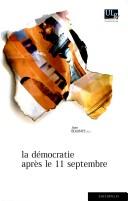
ISBN: 2930322683 9782930322681 Year: 2003 Volume: *1 Publisher: Liège: Ed. de l'Université de Liège,
Abstract | Keywords | Export | Availability | Bookmark
 Loading...
Loading...Choose an application
- Reference Manager
- EndNote
- RefWorks (Direct export to RefWorks)
Democracy --- September 11 Terrorist Attacks, 2001 --- Terrorism --- World politics --- Démocratie --- Attentats du 11 septembre 2001, Etats-Unis --- Terrorisme --- Politique mondiale --- Causes --- 11 septembre 2001, Attentats du (États-Unis) --- Démocratie --- Causes. --- Sciences politiques
Book
ISBN: 9780230391215 Year: 2013 Publisher: Houndmills, Basingstoke, Hampshire : Palgrave Macmillan,
Abstract | Keywords | Export | Availability | Bookmark
 Loading...
Loading...Choose an application
- Reference Manager
- EndNote
- RefWorks (Direct export to RefWorks)
September 11 Terrorist Attacks, 2001 --- Attentats du 11 septembre 2001, Etats-Unis --- Influence. --- Influence --- North Atlantic Treaty Organization --- History. --- Military policy. --- Foreign relations. --- Attentats du 11 septembre 2001, Etats-UnisInfluence. --- InfluenceNorth Atlantic Treaty Organization --- North Atlantic Treaty OrganizationHistory.
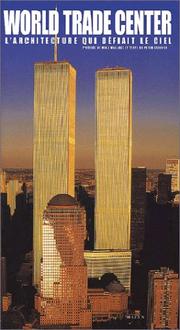
ISBN: 2850258261 9782850258268 Year: 2002 Publisher: [Paris]: Hazan,
Abstract | Keywords | Export | Availability | Bookmark
 Loading...
Loading...Choose an application
- Reference Manager
- EndNote
- RefWorks (Direct export to RefWorks)
WORLD TRADE CENTER, New York, NEW YORK, TERRORISME, GRATTE-CIEL, ARCHITECTURE
Attentats du 11 septembre 2001, États-Unis --- Gratte-ciel --- Yamasaki, Minoru, --- World Trade Center (New York, N.Y.) --- New York (N.Y.) --- Constructions --- Démolition --- New york --- Attentats du 11 septembre 2001, États-Unis
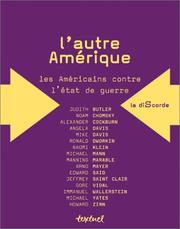
ISBN: 2845970544 9782845970540 Year: 2002 Volume: 11 Publisher: Paris: Textuel,
Abstract | Keywords | Export | Availability | Bookmark
 Loading...
Loading...Choose an application
- Reference Manager
- EndNote
- RefWorks (Direct export to RefWorks)
Bibliotheek François Vercammen
Pouvoirs exceptionnels --- Terrorisme --- Attentats du 11 septembre 2001, Etats-Unis --- Opinion publique americaine --- pacifisme --- veiligheid --- 11 septembre 2001, Attentats du (États-Unis) --- Opinion publique --- États-Unis --- Afghanistan --- Opinion publique. --- Pouvoirs exceptionnels - Opinion publique americaine --- Terrorisme - Opinion publique americaine
Book
ISBN: 3825385035 Year: 2021 Publisher: Heidelberg : Universitätsverlag Winter,
Abstract | Keywords | Export | Availability | Bookmark
 Loading...
Loading...Choose an application
- Reference Manager
- EndNote
- RefWorks (Direct export to RefWorks)
Book
Year: 2011 Publisher: Paris Editions du Moment
Abstract | Keywords | Export | Availability | Bookmark
 Loading...
Loading...Choose an application
- Reference Manager
- EndNote
- RefWorks (Direct export to RefWorks)
complots --- 11 septembre --- secrets d'Etat --- psychocratie --- le syndrome de Truman --- conspirationnisme --- théories complots --- complotisme --- théorie du complot --- conjurationnisme --- 11 septembre 2001 --- société de surveillance --- journalisme --- terrorisme --- World Trade Center (WTC) --- Michel Rocard (1930-2016) --- Étienne Davignon
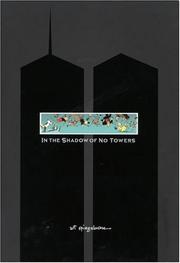
ISBN: 0375423079 9780375423079 Year: 2004 Publisher: New York Pantheon
Abstract | Keywords | Export | Availability | Bookmark
 Loading...
Loading...Choose an application
- Reference Manager
- EndNote
- RefWorks (Direct export to RefWorks)
For Art Spiegelman, the Pulitzer Prize-winning author of Maus, the terrorist attacks of September 11, 2001 were both highly personal and intensely political. In the Shadow of No Towers, his first new book of comics since the groundbreaking Maus, is an account of the events and aftermath of that tragic day. Spiegelman and his family bore witness to the attacks in their lower Manhattan neighborhood: his teenage daughter had started school directly below the towers days earlier, and they had lived in the area for years. But the horrors they survived that morning were only the beginning for Spiegelman, as his anguish was quickly displaced by fury at the U.S. government, which shamelessly co-opted the events for its own preconceived agenda. He responded in the way he knows best. In an oversized, two-page-spread format that echoes the scale of the earliest newspaper comics (which Spiegelman says brought him solace after the attacks), he relates his experience of the national tragedy in drawings and text that convey - with his singular artistry and his characteristic provocation, outrage, and wit - the unfathomable enormity of the event itself, the obvious and insidious effects it had on his life, and the extraordinary, often hidden changes that have been enacted in the name of post-9/11 national security and that have begun to undermine the very foundation of American democracy.
American literature --- graphic novels --- 11 septembre 2001, Attentats du (États-Unis) --- États-Unis --- Politique et gouvernement --- beeldverhalen
Book
ISBN: 9783825354459 3825354458 Year: 2008 Volume: 255 Publisher: Heidelberg: Winter,
Abstract | Keywords | Export | Availability | Bookmark
 Loading...
Loading...Choose an application
- Reference Manager
- EndNote
- RefWorks (Direct export to RefWorks)
Der Sammelband geht in gleichermaßen interdisziplinärer wie interkultureller Perspektive der Frage nach, welche künstlerischen Reaktionen die Terroranschläge vom 11. September 2001 hervorgerufen haben: Wie wurde das die Weltöffentlichkeit erschütternde Ereignis visualisiert, wie inszeniert und literarisiert? In Beiträgen zur amerikanischen und deutschen Literatur, zu Theateraufführungen, Dokumentar- und Spielfilmen, zur Popmusik und zu bildkünstlerischen Werken werden (Re)Konstruktionen, Deutungen und Funktionalisierungen von ‚Nine Eleven’ analysiert, an denen sich über die Geltung als Einzelfälle hinaus die zentralen Muster der ästhetischen Auseinandersetzung mit dem Schreckensszenario, seinen Voraussetzungen und Folgen zeigen.
11 septembre 2001, Attentats du (États-Unis) --- Dans la littérature --- Dans les médias --- Dans la littérature. --- Dans les médias.
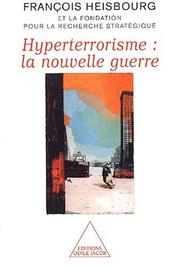
ISBN: 2738110800 9782738110800 Year: 2002 Publisher: Paris: Odile Jacob,
Abstract | Keywords | Export | Availability | Bookmark
 Loading...
Loading...Choose an application
- Reference Manager
- EndNote
- RefWorks (Direct export to RefWorks)
Terrorism --- Political violence --- Geopolitics --- 11 septembre 2001, Attentats du (États-Unis) --- Relations internationales --- Terrorisme --- Aspect religieux --- Islam --- Lutte contre --- Islam.

 Search
Search Feedback
Feedback About UniCat
About UniCat  Help
Help News
News